
Lyme disease: What you need to know
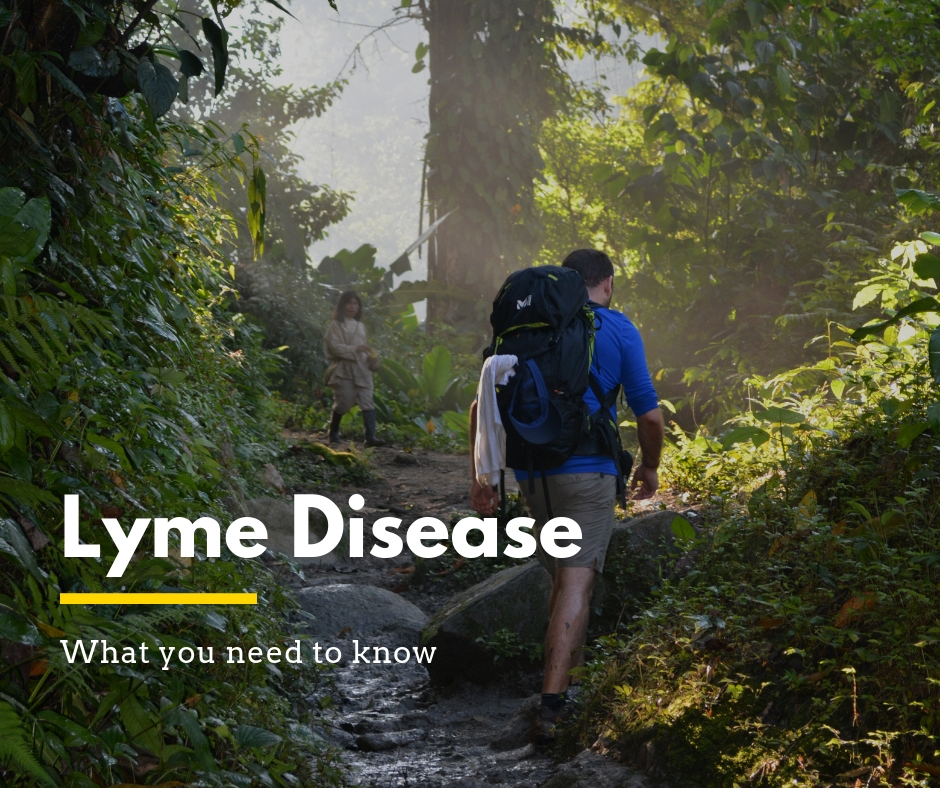
What is Lyme Disease?
Lyme disease is an infection caused by the corkscrew-shaped bacterium, Borrelia burgdorferi, which is spread to people through the bite of several types of blacklegged ticks.
Where People Most Commonly get Lyme Disease ?
In the United States, most infections occur in the following areas:
- Eastern states, primarily New England and the mid-Atlantic
- Northern midwestern states, especially in Wisconsin, Minnesota, and the Great Lakes region
- West Coast, particularly northern California and less commonly, Oregon and Washington
For Lyme disease to exist in an area, both blacklegged ticks and animals infected with the Lyme disease bacteria must be present in the environment.
How is Lyme Disease Transmitted?
In general, ticks need to be attached for 36 to 48 hours before they can transmit Lyme disease bacteria. Most people are infected through the bites of immature ticks called nymphs. Nymphs are tiny (less than 2 mm) and difficult to see. They most commonly bite during spring and summer.
Adult ticks can also transmit Lyme disease bacteria. They are much larger and are more likely to be discovered and removed. Adult ticks most commonly bite during the fall.
There is no evidence that Lyme disease is transmitted from person-to-person through touching, kissing, or having sex with a person who has Lyme disease. Lyme disease acquired during pregnancy may lead to infection of the placenta and possible stillbirth. Therefore, early diagnosis and treatment of Lyme disease is important during pregnancy. However, no negative effects on the fetus have been found when the mother receives appropriate antibiotic treatment. There are no reports of Lyme disease transmission through breast milk or blood transfusion.
Ticks can attach to any part of the human body but prefer hard-to-see areas such as the groin, armpits, and scalp. In most cases, the tick must be attached for 36-48 hours or more before Lyme disease bacteria can be transmitted.
Blacklegged ticks are much smaller than common dog ticks. In their larval and nymphal stages, they are no bigger than a pinhead. Adult blacklegged ticks are larger, about the size of a sesame seed. (Left to right: larva, nymph, adult male, adult female)
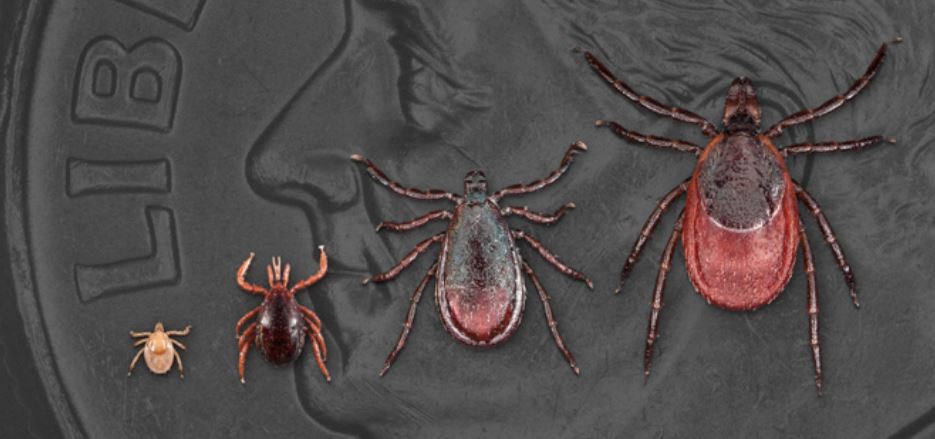
What is the Sign & Symptoms of Lyme Disease?
Early diagnosis and proper antibiotic treatment of Lyme disease can help to prevent late Lyme disease. Although Lyme disease is rarely life-threatening, delayed treatment can result in more severe disease. People who notice a characteristic rash or other possible symptoms, should consult their healthcare provider.
Signs and symptoms of early Lyme disease include:
- a characteristic skin rash, called Erythema migrans
- fatigue
- chills and fever
- headache
- muscle and joint pain
- swollen lymph nodes
Erythema migrans is a reddish or purple colored rash that usually appears 3–14 days after the bite of an infected tick. It typically appears at the site of the tick bite, is round or oval, and expands gradually over the course of several days. Common sites are the thighs, groin, trunk, and armpits. The center of the rash may clear as it enlarges, eventually resulting in a “bull’s-eye” appearance; however, this is not always the case. The rash may be warm, but it usually is not painful. Some patients with early Lyme disease do not have or notice any rash and instead just have “flu-like” symptoms of fever, fatigue, and muscle aches.
Not all rashes that occur at the site of a tick bite are due to Lyme disease. An allergic reaction to tick saliva can also occur and be confused with an erythema migrans rash. Allergic reactions to tick saliva usually appear within a few hours after the tick bite, usually do not expand, and disappear within a few days.
Late Lyme disease:
Some signs and symptoms of Lyme disease may not appear until weeks or months after a tick bite:
- Arthritis is most likely to appear as brief bouts of pain and swelling, usually in one or more large joints, especially the knees.
- Nervous system symptoms can include numbness, pain, nerve paralysis (often of the facial muscles, usually on one side), and meningitis (fever, stiff neck, and severe headache).
- Rarely, irregularities of the heart rhythm may occur.
- Problems with memory or concentration, fatigue, headache, and sleep disturbances sometimes persist after treatment.
Avoid late Lyme disease by promptly treating Lyme disease.
Reinfection: You can get Lyme disease again if you are bitten by another infected tick, so protect yourself from tick bites.
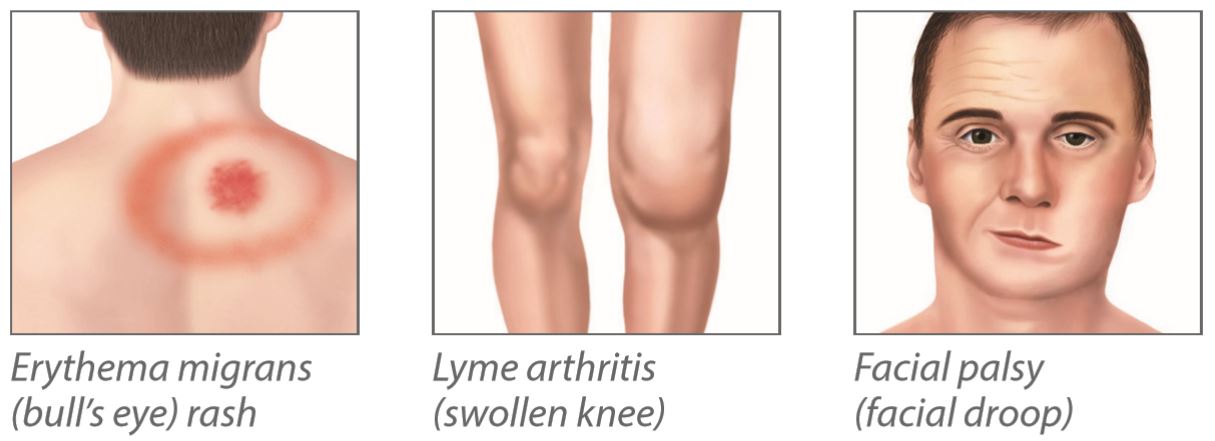
What is the Treatment for Lyme Disease?
People treated with antibiotics for early Lyme disease usually recover rapidly and completely. The antibiotics most commonly used to treat Lyme disease include: doxycycline, amoxicillin, or cefuroxime axetil. Some patients may have persistent or recurrent symptoms and may require another course of antibiotics.
How to Prevent Tick Bites?
- Use Environmental Protection Agency (EPA)-registered insect repellents containing DEET, picaridin, IR3535, oil of lemon eucalyptus, para-menthane-diol, or 2-undecanone. Always follow product instructions.
- Wear clothing treated with 0.5% permethrin. Re-treat clothing annually according to label instructions.
- Shower as soon as possible after spending time outdoors.
- Check for ticks daily. Ticks can hide under the armpits, behind the knees, in the hair, and in the groin.
- Tumble clothes in a dryer on high heat for 10 minutes to kill ticks on dry clothing after you come indoors. If the clothes are damp, dry them completely and then dry for 10 minutes on high heat.
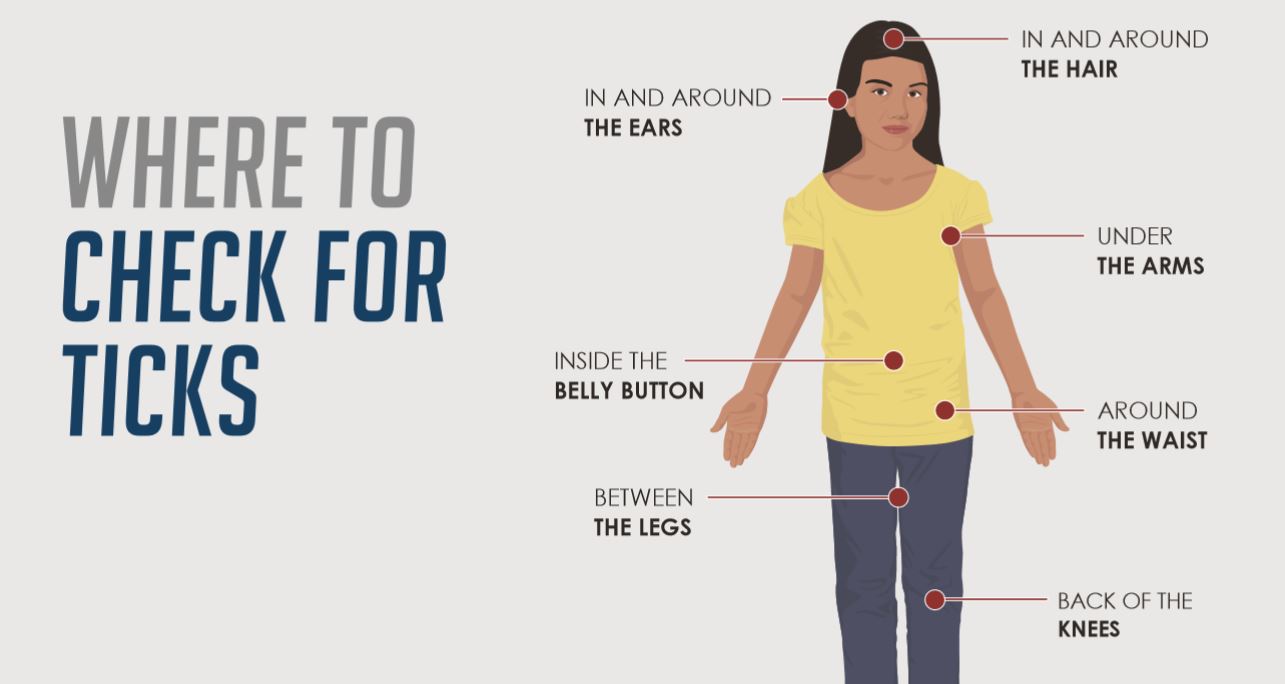
Tick Control In The Yard
Landscaping to create tick-safe zones. Blacklegged ticks need high humidity to survive; they die quickly in drier environments. Removing leaf litter and clearing tall grass and brush around houses and at the edges of lawns will reduce the numbers of ticks. Placing wood chips or gravel between lawns or play areas and wooded areas creates a dry barrier that is difficult for ticks to cross. Fences can help keep deer away from homes.
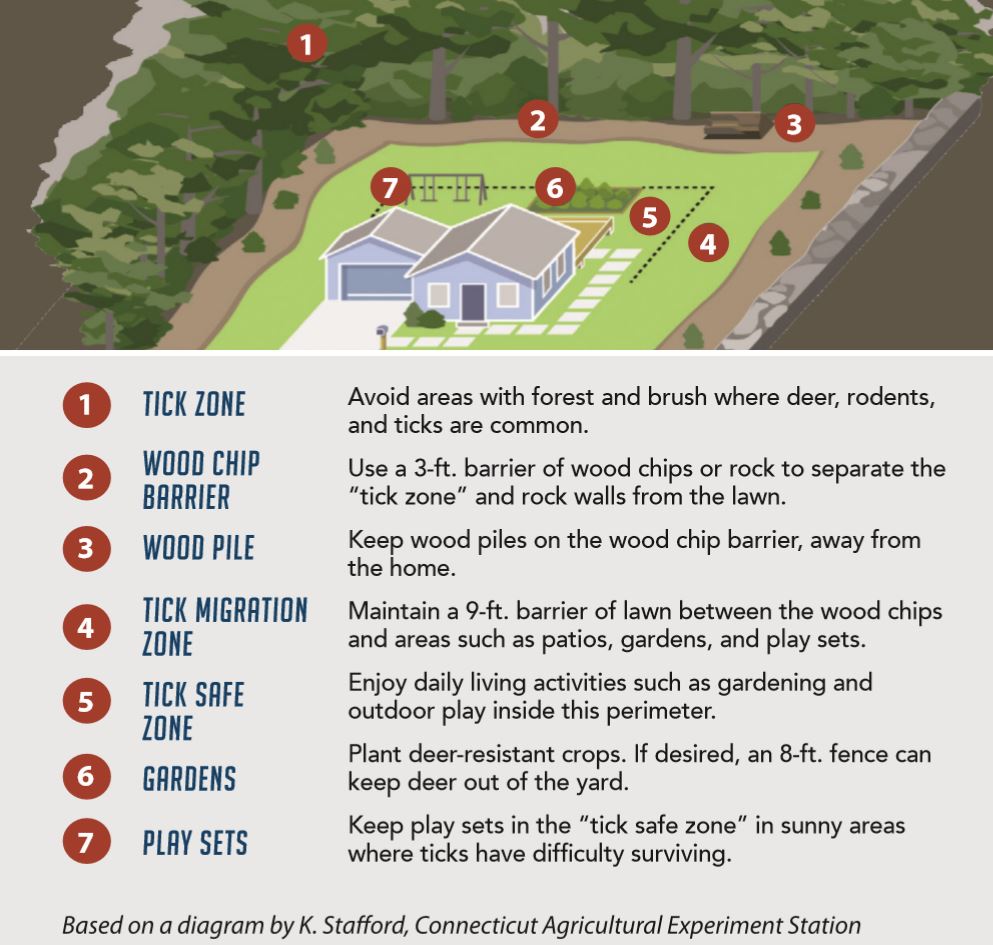
Source:
- CDC


Most Commented